Abstract
1 The H2-receptor antagonists, ranitidine and cimetidine, have been compared with atropine and pirenzepine for their effects on gastric acid output, and on salivary secretion from the left parotid gland in the anaesthetized dog. Gastric and salivary secretions were elicited by intravenous infusion of bethanechol. 2 Atropine (0.3-1 microgram/kg) or pirenzepine (3-10 micrograms/kg) reduced both gastric and salivary secretions, pirenzepine showing little evidence of any selectivity for gastric secretion. 3 The H2-receptor antagonists, ranitidine (30-1000 micrograms/kg) and cimetidine (100-3000 micrograms/kg), selectively inhibited gastric secretion and even at relatively high dose levels did not alter salivary volume.
Full text
PDF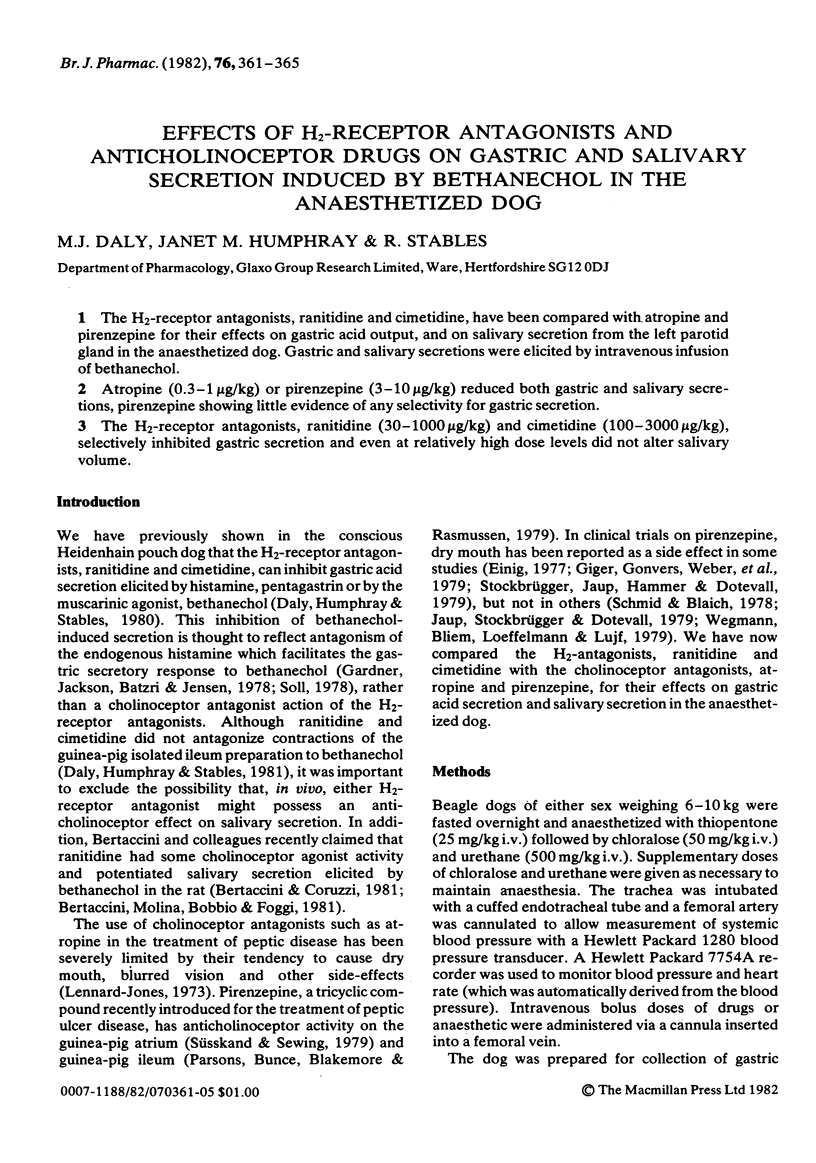
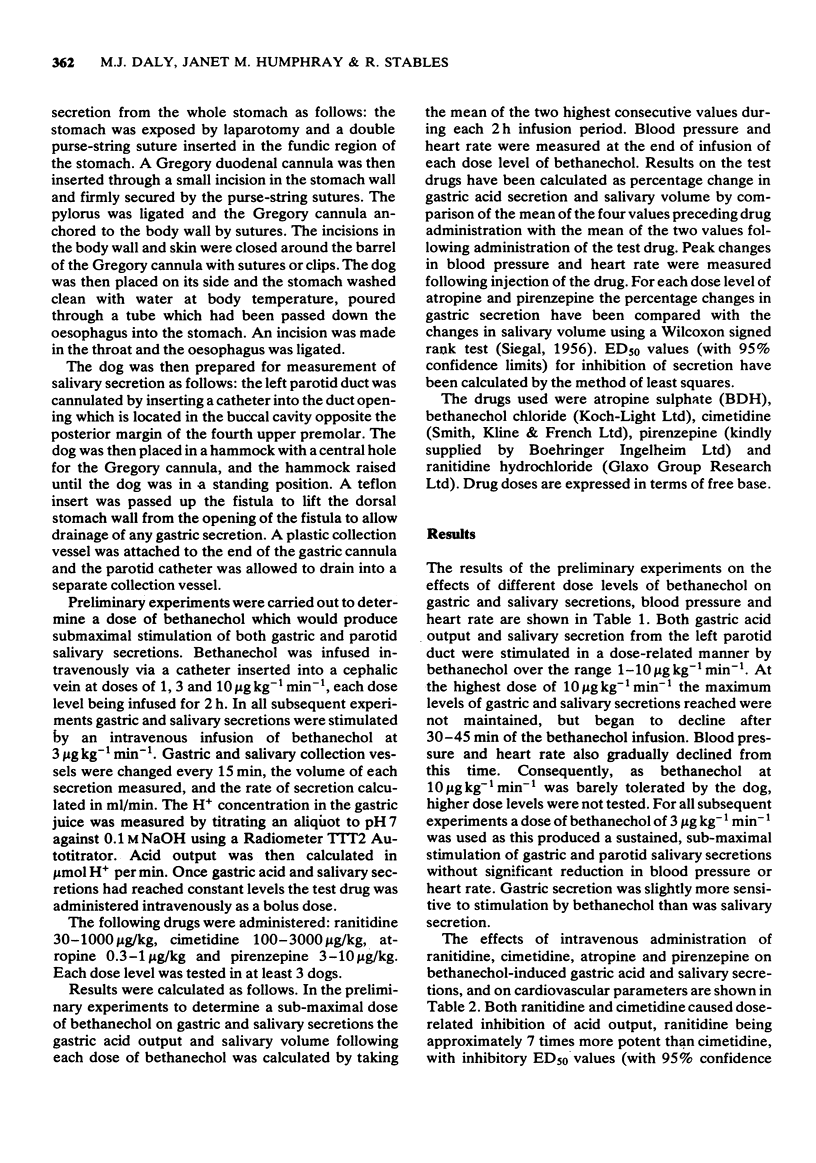
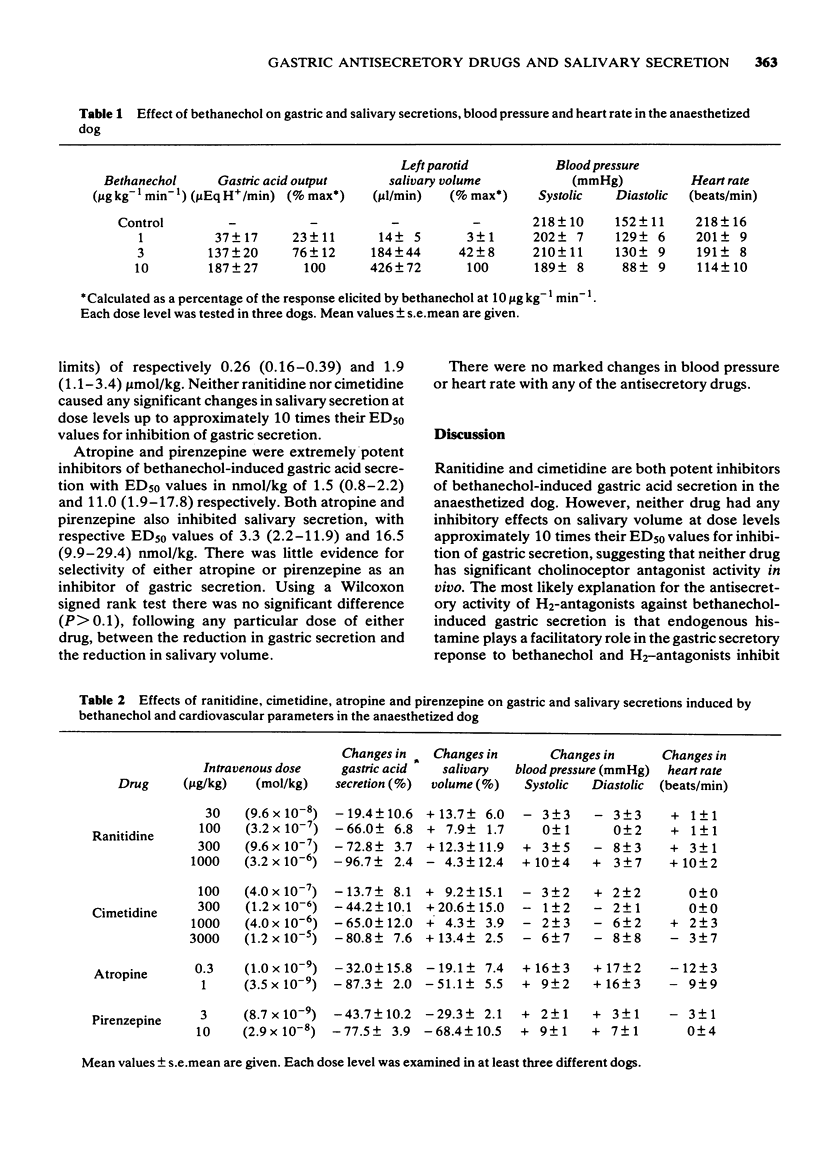
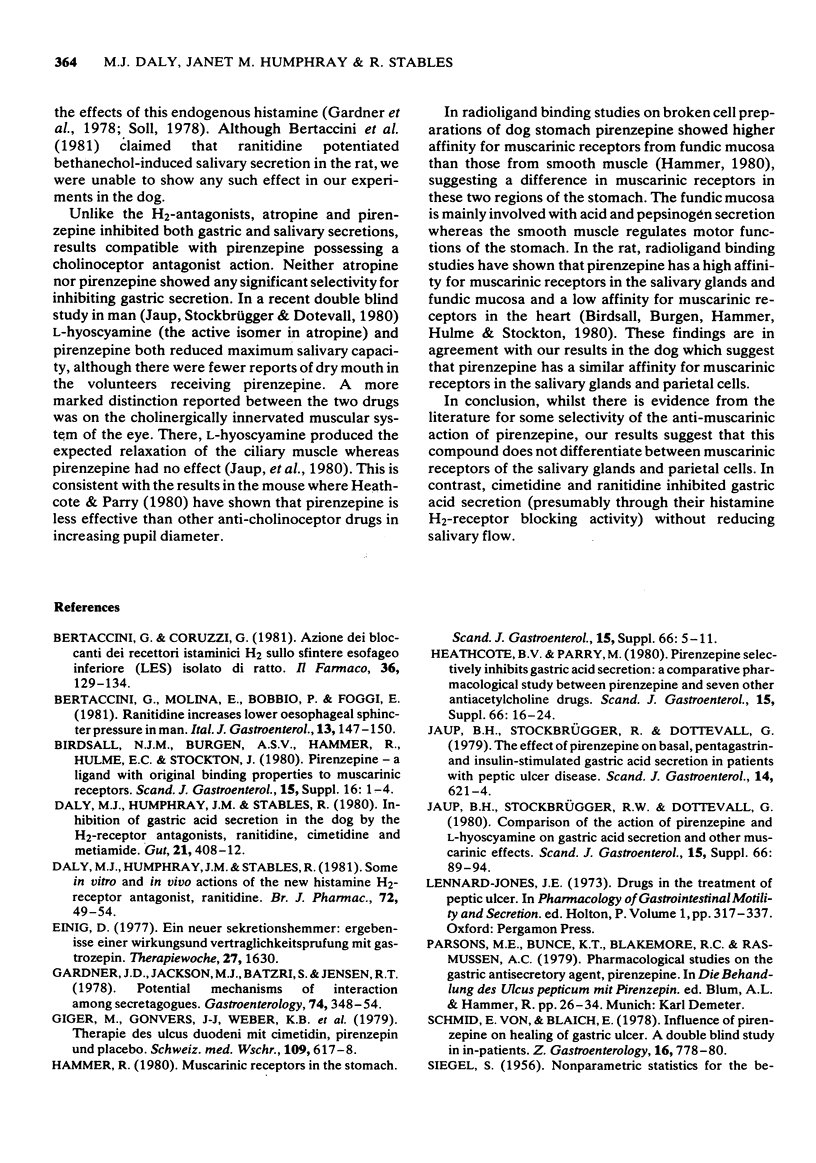
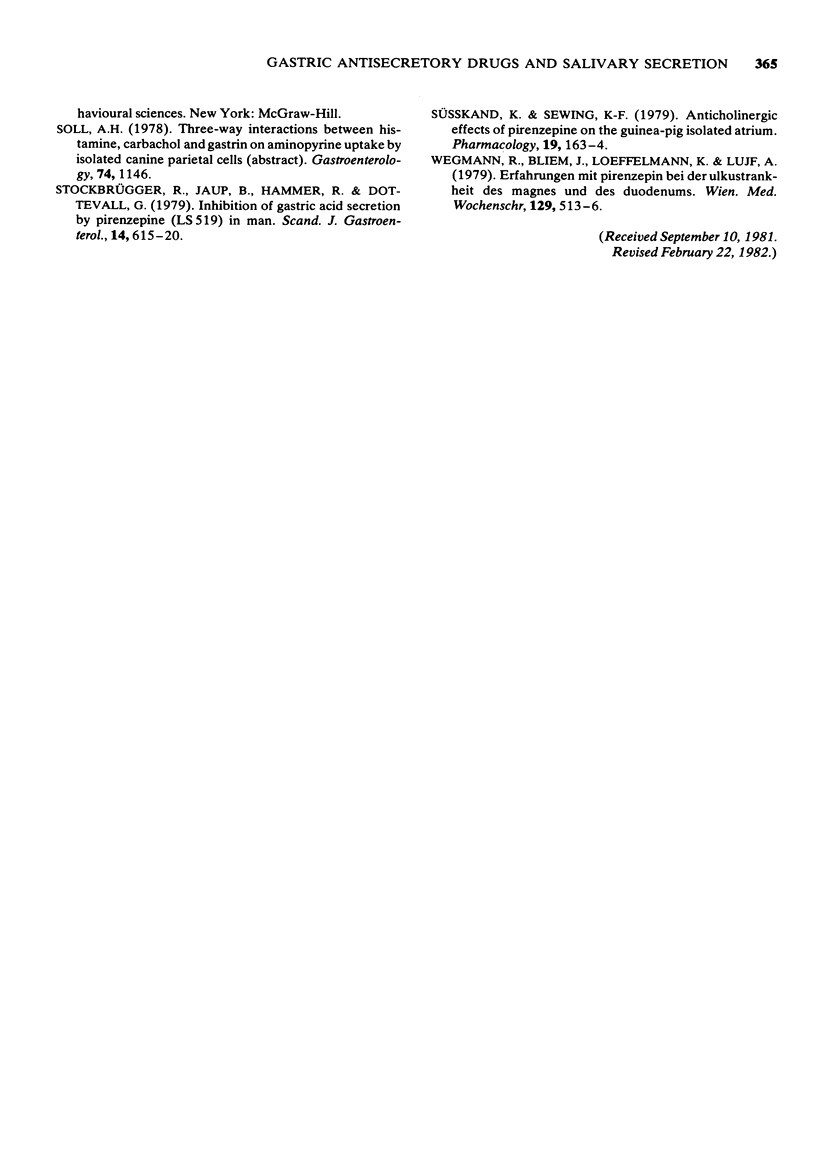
Selected References
These references are in PubMed. This may not be the complete list of references from this article.
- Bertaccini G., Coruzzi G. Azione dei bloccanti dei recettori istaminici H2 sullo sfintere esofageo inferiore (LES)nisolato di ratto. Farmaco Sci. 1981 Feb;36(2):129–134. [PubMed] [Google Scholar]
- Daly M. J., Humphray J. M., Stables R. Inhibition of gastric acid secretion in the dog by the H2-receptor antagonists, ranitidine, cimetidine, and metiamide. Gut. 1980 May;21(5):408–412. doi: 10.1136/gut.21.5.408. [DOI] [PMC free article] [PubMed] [Google Scholar]
- Daly M. J., Humphray J. M., Stables R. Some in vitro and in vivo actions of the new histamine H2-receptor antagonist, ranitidine. Br J Pharmacol. 1981 Jan;72(1):49–54. doi: 10.1111/j.1476-5381.1981.tb09103.x. [DOI] [PMC free article] [PubMed] [Google Scholar]
- Gardner J. D., Jackson M. J., Batzri S., Jensen R. T. Potential mechanisms of interaction among secretagogues. Gastroenterology. 1978 Feb;74(2 Pt 2):348–354. [PubMed] [Google Scholar]
- Giger M., Gonvers J. J., Weber K. B., Sonnenberg A., Birchler R., Mattle W., Hofstetter J. R., Blum A. L. Therapie des Ulcus duodeni mit Cimetidin, Pirenzepin und Placebo: Bericht über eine doppeltblinde, randomisierte Studie. Schweiz Med Wochenschr. 1979 Apr 21;109(16):617–618. [PubMed] [Google Scholar]
- Hammer R. Muscarinic receptors in the stomach. Scand J Gastroenterol Suppl. 1980;66:5–11. [PubMed] [Google Scholar]
- Jaup B. H., Stockbrügger R. W., Dotevall G. Comparison of the action of pirenzepine and L-hyoscyamine on gastric acid secretion and other muscarinic effects. Scand J Gastroenterol Suppl. 1980;66:89–94. [PubMed] [Google Scholar]
- Jaup B. H., Stockbrügger R., Dotevall G. The effect of pirenzepine on basal, pentagastrin- and insulin-stimulated gastric acid secretion in patients with peptic ulcer disease. Scand J Gastroenterol. 1979;14(5):621–624. doi: 10.3109/00365527909181400. [DOI] [PubMed] [Google Scholar]
- Stockbrügger R., Jaup B., Hammer R., Dotevall G. Inhibition of gastric acid secretion by pirenzepine (LS 519) in man. Scand J Gastroenterol. 1979;14(5):615–620. doi: 10.3109/00365527909181399. [DOI] [PubMed] [Google Scholar]
- Süsskand K., Sewing K. F. Anticholinergic effects of pirenzepine on the guinea-pig isolated atrium. Pharmacology. 1979;19(3):163–164. doi: 10.1159/000137304. [DOI] [PubMed] [Google Scholar]


